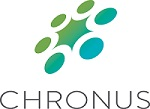ATD Blog
4 Ways to Build a Successful DEI Strategy
Thu Sep 30 2021

Today’s employees seek employers who aren’t turning a blind eye to diversity, equity, and inclusion (DEI). After last year’s swell of protests and prompts for change in the face of blatant racial injustice and violence, calls for changes in and out of the workplace were undeniable. Realizing the impact of this new social contract, data shows that companies are starting to adjust their objectives to drive equitable change. According to Gartner, the number of HR leaders identifying DEI efforts as a top priority was 1.8 times higher in 2020 than in 2019. But knowing what changes a company should make isn’t always easy.
What Constitutes a Robust DEI Strategy?
Research suggests that effective DEI approaches aren’t ones that typically involve a command-and-control approach. For example, mandatory diversity training, traditional performance reviews, and hiring tests have had adverse effects on the number of diverse employees in managerial roles in organizations. Instead, strategies that focus on principles such as engaging managers in problem-solving, exposing leadership to people from different groups, and encouraging social accountability for change at the highest levels drive greater organizational impact. Common activities that channel these principles involve:
Designing formal mentoring programs
Establishing diversity task forces
Creating open forum discussions
While many organizations are revitalizing their DEI efforts, one question still lingers: How do you measure success? Here are four rules to ensure your DEI initiative drives measurable business impact.
Get Leadership Buy-In
While data suggests a new momentum to tackle diversity and inclusion at work, actions taken by big companies since last summer alone have been a mixed bag of impactful and surface level. Historically, DEI initiatives have fallen to the bottom of the priority list. The lack of resources and organizational support given to the leaders of this type of organizational change have made lasting impact an uphill battle.
To ensure success for your DEI strategy, it’s critical to take a top-down approach. Getting executive sponsorship drives commitment, compliance, and investment. For example, Walgreen’s global chief diversity officer, Carlos Cubia, has championed this approach by launching the company’s first diversity and inclusion report and forming a committee to link a portion of the company’s incentive pay to performance on DEI goals.
With backing from senior leaders, employees understand the importance of DEI and its role in the overall business strategy. Without it, clear goals and commitment tend to fall by the wayside. With that, the success of your DEI strategy must first start with the decision-makers. When there’s a safety net of support, DEI becomes a continuous improvement initiative to drive further business rather than a “nice-to-have” program for moral encouragement.
Define Goals
There are many places to misstep when it comes to building a robust DEI strategy, but the most common mistake often comes from not establishing concrete goals. To understand the organizational impact of your DEI strategy, you’ll need to identify key metrics of success that align with the high-level goals of your organization. Remember, to create lasting initiatives with sustainable impact, success must relate to the business goals or you’ll risk falling off the priority list.
Key metrics for DEI can be anything. Perhaps your company is looking to increase the number of LGBTQIA employees in leadership, or maybe you’re looking to revamp the values and language of the hiring process to make positions more inviting for women. Whatever the case, think through the organizational objectives of this initiative and formalize tangible goals.
Go Beyond Hiring
Creating a meaningful DEI strategy is not a quick process. One of the most important changes needed to tackle this objective is to look at it across the entire employee lifecycle, not just from the hiring perspective. Effective DEI looks at how advancement, retention, and employee satisfaction are impacted. To go deeper, initiate an audit of your organization with questions like:
How are various groups represented at the executive and management levels?
Are certain employee demographics more likely to leave your company than others?
How likely are certain employee groups promoted compared to others?
DEI should be looked at as a marathon, not a sprint—a continuous work in progress that is constantly revisited, invigorated, and modified to align with the evolving DEI concerns and employee needs.
Leverage Technology for Quantifiable Analytics
As companies look for solutions to help move toward a more diverse and equitable environment, an opportunity for technology has opened. Human development tools and software can help guide DEI initiatives by implementing consistent, less biased, and scalable decision-making processes.
In addition, technology can streamline DEI administration efforts through automation, curating benchmark data, and simplifying employee connection. For example, an organization could use mentoring software to automate and simplify the matching process for a diversity mentoring program. Or a manager preparing to coach an employee could integrate the company’s communication platform into the development program to keep connection all in one place. Technologies and capabilities like this can elevate participation and key insights to help maximize equitable employee initiatives.
The lingering effects of the pandemic and nationwide protests against racial injustice have birthed a new (or renewed) working climate. Today’s leading companies have an excellent opportunity to go beyond DEI as a topic of the moment and instead embed it as a staple organizational culture and priority.

